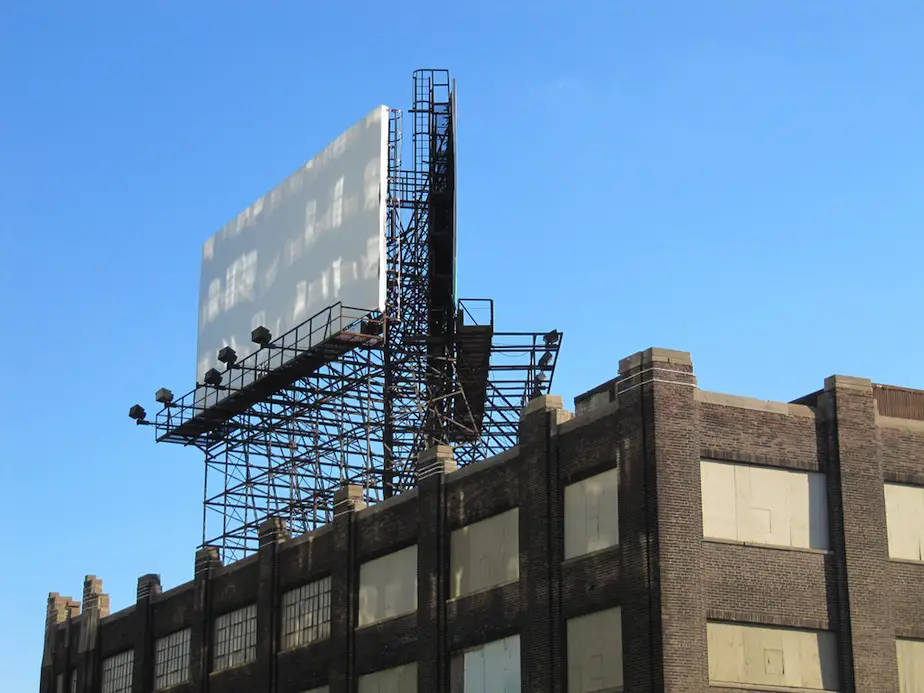If infrastructure is a political orphan, in President Obama it may have a found an adoptive father, although a distant and understandably distracted one. In his January 2010 State of the Union address, he said: “We can put Americans to work today building the infrastructure of tomorrow. From the first railroads to the interstate highway system, our nation has always been built to compete. There’s no reason Europe or China should have the fastest trains.” It is a watershed moment when any U.S. president spares precious moments from a State of the Union address to utter such words. It is extraordinary that we have a president who regularly uses the word “infrastructure” in his speeches, or that our vice-president uses the word “density” with a palpable understanding of the concept as it relates to rail travel. Perhaps in the ever-maddening world of Washington, D.C.—the locus for the representatives of exurban America—such baby steps are the first moves toward a more urban America.
Yet it remains confounding that the best we got in 2010 toward high-speed rail was $8 billion, much of it targeted for a new line between Tampa and Orlando. Thanks to Rick Scott, Florida’s then newly elected Tea Party governor, those funds were redirected to smaller projects nationwide. That left any hope for American high-speed rail in the hands of California governor Jerry Brown. But his plan to connect Los Angeles and San Francisco with a first-phase pilot project could unravel and threaten high-speed rail elsewhere in the United States: at inception it will only connect low-density areas with minimal ridership potential because the connections to the big cities are not yet funded. Cities within 500 miles of each other provide the true ridership potential for high-speed rail [pdf]. Without significant federal cash to fund the expensive rights-of-way that must be created within the boundaries of large cities nationwide, high-speed rail will never succeed in America.

America needs at least $150 billion to properly connect the major urban corridors within our megaregions, including Dallas-Houston, Chicago-St. Paul, Charlotte-Atlanta (“Char-Lanta”), the Cascadia region, the Northeast, and, yes, areas in California and Florida. Rail advocates, however, should fight any politicized effort to build high-speed rail in low-density areas where ridership would be minimal; this would only create white-elephant projects that would doom the future of American high-speed rail. To some degree, this has happened with Spain’s vaunted new system, which attempted to bring together the nation’s cultural mosaic but disregarded the ridership potential that rests only with big cities. (Some economists believe that overspending on the rail system helped to fuel Spain’s current debt crisis). High-speed rail is expensive and should not be deployed for cultural, social, or political reasons; it should be used to connect hyperdense cities to increase their economic output, which in turn increases GDP, lowers carbon footprints, and alleviates airport congestion nationwide.
When infrastructure investments are merit-based and urban, the stimulus effects can be tremendous. Consider that Vice-President Joe Biden, speaking about the Florida high-speed rail proposal in 2010, stated that the $1.25-billion investment in the corridor would have generated more than 23,000 jobs over four years, and that, by extension, 100 times that investment across the country could create over 2 million jobs nationally and connect our major cities. Now that would be stimulus.
So perhaps we should take solace in the fact that President Obama in 2010 referred to the overall $8-billion investment proposal as a “down payment.” Maybe in the subtle use of the these words, in a presidency in which every word is said with discipline, Obama is signaling that he will get to it all in his second term.
Yet for the president to have stated, “There’s no reason Europe or China should have the fastest trains,” is, with all due respect, disingenuous. There are reasons. Those societies revel in their urban density, and they have the ability to allocate resources efficiently toward that end. China may soon overtake America in automobile production, but it also has unveiled the world’s fastest passenger train to connect its thriving, hyperdense cities.

Beijing’s new emphasis on high-speed rail is particularly relevant to the American context because China’s land mass is similar in size to the continental United States. This means high-speed rail can be effective in connecting cities even in very large countries, contrary to critics who said it could only work in small nations, such as Japan. At a top speed of 217 miles per hour, China’s Harmony Train, if operating in the United States, would propel us from Manhattan to downtown Charlotte via Washington in approximately three hours, eliminating an enormous amount of regional air traffic, freeing up runway slots for profitable long-haul flights, and resulting in far fewer delays for air travelers nationwide. This is not just a blue-state problem for the Northeast Corridor: Each year 1 million passengers fly between Atlanta and DC, and similar numbers travel between Charlotte and New York City. The New South is in the house, and it has many of the same urban infrastructure needs that our older cities have—needs that perhaps should be fulfilled first in red and purple states if we are to be politically savvy about making our infrastructure investments appealing, successful, and merit-based.

Going forward, one could imagine a very different approach to our governance and our economic malaise based on the premise that large-scale urban infrastructure investment would be both economically and environmentally beneficial. After the bailouts of the past few years, when banks were considered too big to fail, we could be told that we as a nation are, in fact, too big to fail. After preventing the global financial system and the auto industry from falling off the cliff, the White House could finally say, “OK, folks, you really are next!”
Imagine that it’s early 2013. In the gray light of late winter, four terrifying, push-me-pull-you facts, hopefully, become clear to the Obama team:
- Significant unemployment and middle-class wage stagnation will likely continue due to outsourcing, automation, and the ongoing transition to a service economy.
- Spiraling entitlement costs, particularly health care for baby-boomer retirees, will continue to threaten the deficit and the dollar, suggesting limited federal spending.
- Domestic energy supplies will still fall short of our needs, while Middle Eastern oil supplies will remain highly volatile
- Polar bears will continue to perfect the doggy paddle.
Faced with such facts, perhaps we might hear our leaders promote time-tested ideas of density and mass transportation, of cities using far less energy per capita than their suburban counterparts, of cities understood as being the solution to a vast swath of our problems, given the right emphasis on infrastructure. Imagine if the president addressed the nation, saying:
“America, we have a silver bullet. We are going to rebuild this nation. We are going to create an Infrastructure of Opportunity for all Americans, and while we’re at it, we’re going to create the jobs of the future, build an innovation economy, rein in health-care costs, lower our dependence on foreign oil, and lead the planet to sustainability. We are going to do this in one fell swoop, with one big idea, called the American Smart Infrastructure Act (ASIA).”
Imagine that Mr. Obama proposed to merge the federal transportation appropriations process with a revised version of cap-and-trade legislation on emissions into a consolidated bill called ASIA. Its premise would be as follows:
We will build and rebuild infrastructure that lowers greenhouse gas emissions and encourages urban density, with an emphasis on high-speed rail; urban mass transit; transmission grids from alternative energy sources; national broadband Internet; and critical roadway maintenance. We will deemphasize all infrastructure that exacerbates emissions, particularly roadway and airport expansion projects.
To expedite infrastructure construction, lower costs, accelerate job creation, and bring both political sides to the table, the government will streamline the National Environmental Protection Act (NEPA) and negotiate project labor agreements with unions. Millions will be employed quickly, pouring liquidity into Main Street.
Health-care costs will lessen as people rely less on driving and more on lifestyles that encourage walking. As people urbanize in response to new infrastructure and tax reform, rates of diabetes and chronic heart disease will decrease, reducing the most costly sources of health care spending.
To pay for ASIA and help create an Infrastructure of Opportunity fund, we will recoup the hundreds of billions of dollars lost annually to traffic congestion by charging people for the costs of their pollution, particularly coal emissions, creating a market for cap-and-trade exchange. To do this fairly, we will (a) pass a national $1-per-gallon gas tax whose revenues are committed only to smart infrastructure as defined above; (b) override state legislatures that block cities from passing congestion-pricing plans at the municipal level, and offer matching federal ASIA grants to cities that enact congestion pricing; (c) encourage public-private partnerships that build smart infrastructure by offering tax abatements, matching grants, and low-interest TIF bonds; and (d) level the balance of payments between cities, states, and the federal government, allowing cities to keep more of the tax dollars they generate so long as they use these funds for smart infrastructure.
It is this bill—this silver bullet—that demands the fierce urgency of now.
Perhaps we can imagine ASIA in America, with the hope of generating a new landscape for a new millennium, one in which anonymous sprawl would give way to a green, healthy, prosperous urbanity. Perhaps we can build a Country of Cities, with this new Infrastructure of Opportunity as its primary vehicle.
But a Country of Cities requires the creation of new bridges, both physical and social. We need bridges that lead the population out of the dependency of the suburbs and into the productivity and sustainability of our cities. When people cross this bridge, they must be able to find, on the other side, an urban life of true opportunity. And that demands not only a functional infrastructure with accessible transit and good schools, but also housing that is affordable to the widest possible economic spectrum. We now turn to the challenge of building more equitable cities.
This article is an extract from A Country of Cities: A Manifesto for an Urban America – a new book by Vishaan Chakrabarti.


